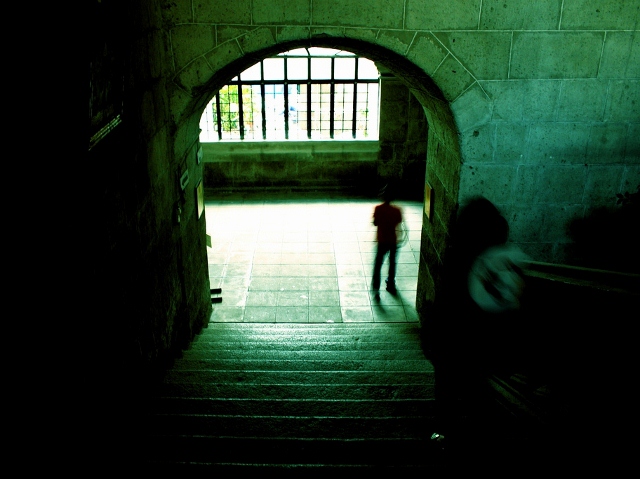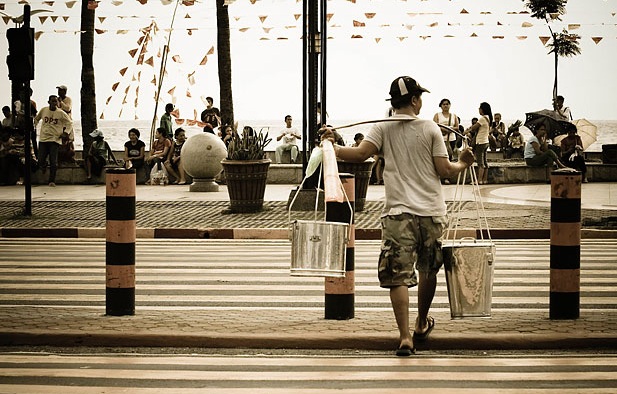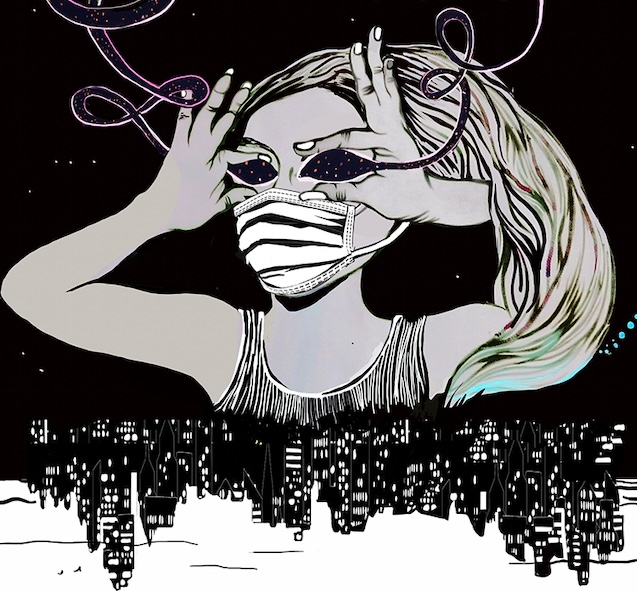Jessica Hagedorn writes about the city of her birth, where “either nothing surprises you, or everything does.”

July 16, 2013
Manila is haunted by the ghosts of its past—by centuries of violent foreign occupation and the 20-year reign of dictator Ferdinand Marcos. It’s the painful specter of that history, and the bleak shadow it has cast, that makes Manila an ideal setting for noir. Here in the introduction to Manila Noir, the latest addition to Akashic Book’s series of original noir anthologies, poet, novelist, and artist Jessica Hagedorn writes of how ghosts of past occupations, buried secrets, corrupt political dealings, crime, and inequality have shaped the fabric of the Philippine capital city. Hagedorn, who was born and raised in the Philippines and came to the U.S. in her teens, invited thirteen other writers from Manila and across the Philippine diaspora to contribute original stories each set in a specific neighborhood in Manila.
She mostly wears red. And sometimes black.
I like to think of Manila as a woman of mystery, the ultimate femme fatale. Sexy, complicated, and tainted by a dark and painful past, she’s not to be trusted. And why should she be? She’s been betrayed time and again, invaded, plundered, raped, and pillaged, colonized for nearly four hundred years by Spain and fifty years by the United States, brutally occupied from 1942 to 1945 by the Japanese army, bombed and pretty much decimated by Japanese and U.S. forces during an epic, month-long battle in 1945. In spite, or because of this bloody history, Manileños (her wild and wayward children) have managed to adapt, survive, and even thrive. Their ability to bounce back—whether from the latest round of catastrophic flooding, the ashes of a twenty-year-dictatorship, or a horrific world war—never ceases to amaze.
Manila is where I was born, a city of heat and shadow and secrets, perfect for this genre we call noir. Built on water and reclaimed land, Manila has evolved over the years into an intense, congested, teeming megalopolis, the vital core of an urban network of sixteen cities and one municipality nowadays collectively known as Metro Manila. Around twelve million people live there presently, maybe more. The numbers are increasing by the minute.
Can we talk about her considerable nostalgic charm? Roxas Boulevard, a waterfront roadway along Manila Bay, is akin to the Malecón in old Havana, Cuba, down to its stately coconut palm trees, glorious sunsets, and fraught colonial history. The esplanade along the eroding seawall is one of Manila’s few democratic public spaces. Where anyone, rich or poor, can seek respite from the clamor and pollution of the city and gaze at the water and dream. Both Roxas and Havana’s Malecón were constructed during the early 1900s, when Cuba and the Philippines were under U.S. military rule. When I was a child, Roxas was known as Dewey Boulevard, after the American admiral. Back then, I never questioned the weirdness of all those streets names after Americans; that tells you everything. The U.S. embassy is still located on one end of Roxas Boulevard, to this day a site of hope, deep resentment, and longing. Under a boiling sun, Filipinos line up to apply for their exit visas. The lines are long. So is the wait.

Ghosts
Many Filipinos of a certain generation will remain forever haunted by the twenty-year reign of Ferdinand Marcos and his glamorous “Steel Butterfly” first lady, Imelda. Many would rather forget. After all, Ferdinand Marcos is dead. And his eighty-three-year-old widow, once-feared and reviled, now merely comes across as dotty and harmless. The Marcos regime was enthusiastically backed by the U.S. from the start, until the plundering of coffers, the declaration of martial law, the widespread use of torture and killing of dissidents, and the brazen assassination of Senator Ninoy Aquino became much too embarrassing. The people stormed the palace, the Marcoses fled to Hawaii, and their corrupt rule came to a spectacular and very public end in 1986. Or did it?
In the Philippines, playful nicknames are ubiquitous and history has a way of repeating itself in the most ironic of ways. Ferdinand “Bong Bong” Marcos Jr., the only son of Ferdinand and Imelda, is now a senator. Benigno “Noynoy” Aquino III, whose mother was the iconic President Corazon Aquino and whose father was the equally iconic Senator Ninoy Aquino, is the current president. Dashing, handsome Ninoy happened to be one of Imelda’s early suitors. It can get really confusing. Ninoy led the opposition against the Marcos government and was shot getting off the plane at Manila International Airport when he returned from exile in 1983. The assassination made headlines worldwide; Ninoy Aquino became a national hero and martyr for the cause. The airport has been renamed after him. There’s an official holiday and a museum. The mastermind behind Aquino’s very public murder—whether it was Ferdy, Imelda, or some pissed-off army general or someone else—remains a mystery.
Many years have passed since the dark times of martial law and the Marcos dictatorship. People are now free to write and say what they want. The economy seems to be on an upswing. Call centers are big business, and there are art galleries, indie bands, and film collectives flourishing in places like Quezon City. But glaring inequities still exist, and workers must toil in faraway places like Saudi Arabia, Israel, Germany, Italy, Spain, and Iceland just to support their families. There have been many documented cases of female domestic overseas workers being treated as slaves, sexually and physically abused, even killed by their employers.

There are crimes, and there are crimes.
Manila’s a city of survivors, schemers, and dreamers. Where a down-and-out kid from the sticks named Manny Pacquiao can punch his way to the top with his fists, become a congressman, star in action movies, and—like other action stars before him—maybe even one day become president.
Manila’s a city of extremes. Where the rich live in posh enclaves, guarded by men with guns. Where the poor improvise homes out of wood, tin, and cardboard and live by their wits. Where five-star hotels and luxury malls selling Prada and Louis Vuitton coexist with toxic garbage dumps and sprawling “informal settlements” (a.k.a. squatter settlements), where religious zeal coexists with superstition, where “hospitality” might be another word for prostitution, where sports and show business can be the first step to politics, where politics can be synonymous with nepotism, cronyism, and corruption, where violence is nothing out of the ordinary, and pretty much anything can be had for a price—if you have the money and/or connections, that is.
The cops are often in collusion with the syndicates behind many of the more profitable crimes like kidnapping, extortion, human trafficking, and drugs. Justice is questionable. Homicides are often fueled by jealous rage, a thirst for revenge, machismo, and unrequited love. Or by a paranoid psychosis brought on by smoking shabu. Or maybe, just maybe, by hanging out in a karaoke dive, drinking too much, and singing “My Way” in the wrong key.
Writers from the Americas and Europe are known for a certain style of noir fiction, but the rest of the world approaches the crime story from culturally unique perspectives. The Philippines has produced many distinguished writers and poets writing in English. It’s a shame that these works are so hard to come by outside of the Philippines. Several contemporary writers have left their indelible mark on crime fiction. Three immediately come to mind: Charlson Ong, F.H. Batacan, and Wilfredo Garrido. In putting this anthology together, I found the noir genre flexible enough to accommodate the Filipino flair for the gothic and the world of the supernatural. The modern Filipino can be urbane and cosmopolitan, wear delicate crosses and amulets around his or her neck, go to confession on Fridays, club-hop on Saturdays, and attend Mass on Sundays, while still believing in the presence of duendes, kapres, and bloodsucking aswangs. All these delicious contradictions serve to enrich and expand our concept of noir, while leaving room for the noir essentials: alienated and desperate characters, terse dialogue, sudden violence, betrayals left and right. And of course, there’s plenty of mordant humor. And of course, there are no happy endings.
Excerpted from MANILA NOIR, edited by Jessica Hagedorn. Reprinted by arrangement with Akashic Books. Copyright 2013. All rights reserved. No part of this excerpt may be reproduced or printed without permission in writing from the publisher.



